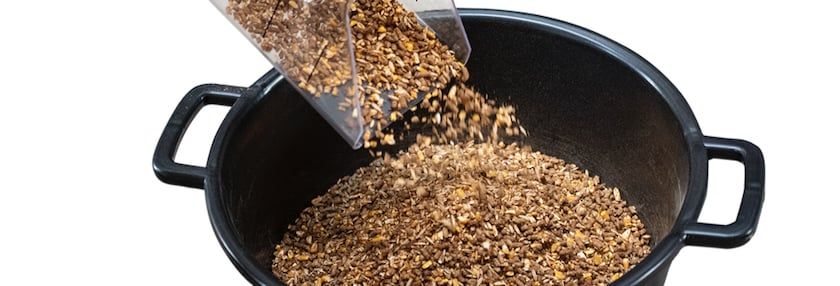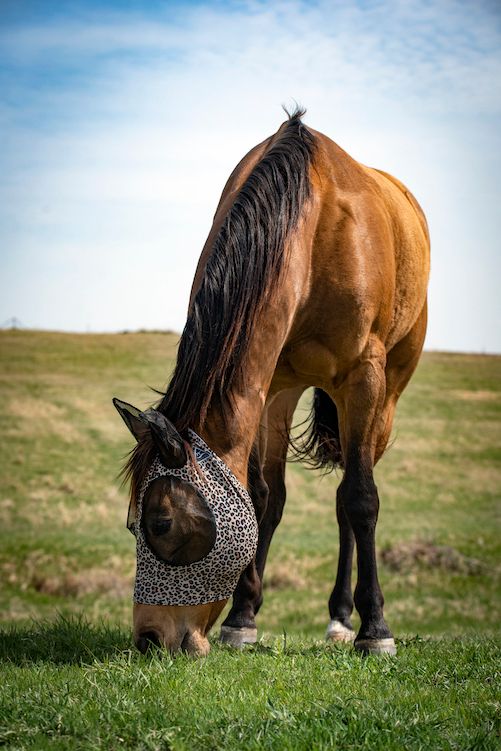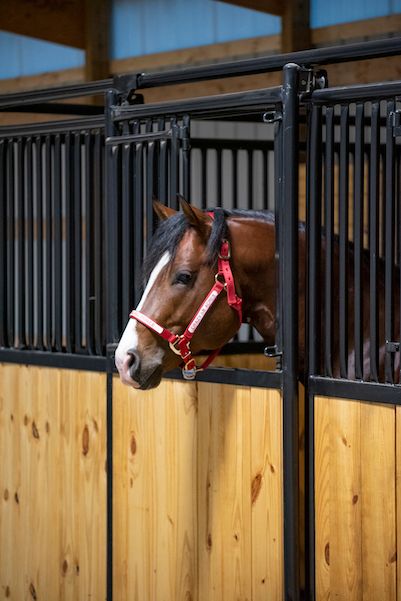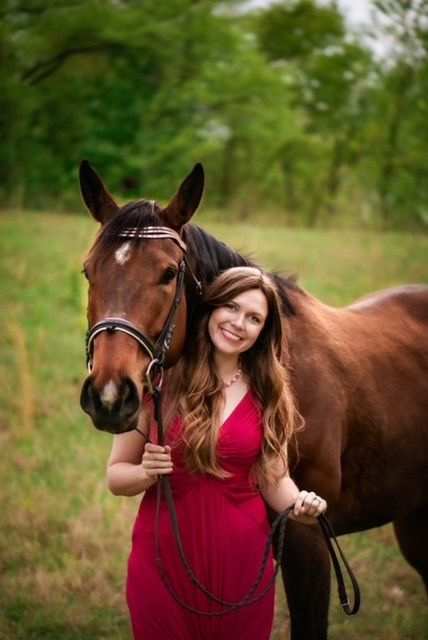Q&A With an Equine Nutritionist


Ensure your horse’s nutritional needs with this insight
Back in the early 1800s, horses were the farm workforce—there were fields to plow, and wagons and carriages to pull every day for 10 to 15 hours daily. They were expending a lot of energy and calories with their basic food source being grazing low-quality forage.
Then cereal grains were introduced to horse diets, says Dr. Jyme Nichols, director of nutrition at Stride Animal Health. The most accessible included corn, barley and oats. Knowing horses required higher levels of fiber, as it’s safest for them and their diet, oats had the highest level of fiber and was a natural choice to feed for extra calories that provided horses with extra energy.
“Fast forward to present day—we have horses kept in stalls or in small turnouts, and they may have very limited hours of riding,” says Dr. Nichols. “That horse that used to work up to 14 hours a day now maybe only works an hour a day when we have time to ride them. The rest of the time, they spend eating.”
If you take a high-starch feed like concentrated grain meal and overfeed them, “you can make a horse very excitable or crazy,” said Dr. Nichols.
Equine nutrition is complex—so here is a Q&A with Dr. Nichols.

Does my horse need supplements?
The answer to that is never black or white. It depends on what you are doing with your horse; how old your horse is; whether you’re feeding your horse a forage-only diet or whether your horse is on feed. It also depends on if your horse is dealing with certain problems, like if they have arthritis, gut issues, or specific needs that are outside of what we would consider ‘normal,’ more basic nutritional needs.
Does protein make horses hot?
No, it doesn’t. It is the starch and sugars in what you are feeding that make horses hot.
There is some confusion about protein—it’s commonly thought that horses need more feed, more protein and more nutrients, so we’re going to feed this higher-protein feed. Bu owners may not realize that when they were feeding that higher-protein feed, they were also feeding more of it. It wasn’t necessarily the high protein that was making the horses become excitable. It was the fact they were feeding a really large volume of a high-starch, high-sugar feed.
Nutritionally, how can I manage or prevent a ‘hot’ horse?
If you have a horse that is naturally more excitable and anxious, one of the better things you can do is look for a diet that is high in fiber to provide calories from fat sources. Those fat sources are called “cool energy calories,” meaning it gives horses the calories that they need, but it’s not going to make their mind and their attitude hot and excitable.
For energetic horses, avoid high starch feeds. Refer to the feed tag for the “NSC,” which is the combination of starch + sugar. “NSC” stands for non-structural carbohydrates. You get to that number by adding the starch number on the feed tag to the sugar level. As a general rule of thumb for feeds considered “low starch," if you were to add the starch and the sugar together, that number shouldn’t be over 22%.
Can sugars impact certain horse health conditions?
For PPID horses (or equine Cushing’s horses), starch and sugar are really important in the diet to help manage. If you have a horse with a medical sensitivity, such as a horse with Cushing’s, laminitis or equine metabolic syndrome, the medical sensitivity to sugar means you need to make sure that your NSC is under 12%. After that, you want to make sure you’re feeding at the recommended levels of the feed.

How do you nutritionally manage a horse that ties up frequently?
There is not a generic answer. But keep horses off green grass (which has higher sugar content); feed low-starch, low-sugar feed; and make sure you have a proper balance of trace minerals, macro nutrients and vitamins. Also, ensure they have daily exercise.
How do I know if my hay is meeting their basic needs?
First off, do a visual check and body condition assessment of your horse. Look at rib cover—you should be able to easily feel but not easily see, ribs. Next, you’ll want to look at the topline. You want the horse’s topline to be essentially flat. If they can hold water on their spine on a rainy day, that tells you they’re in a bit of an excess body condition. But if rain were to pour on them and just run off, and their spine peaks up like a mountain, then that tells you their body condition is probably a bit under.
The most concrete thing you can do is get your hay tested…because forage is the foundation of your horse’s diet and it is so important to understand what you are feeding.
Tags:Horse Sense

Acreage Life is part of the Catalyst Communications Network publication family.














